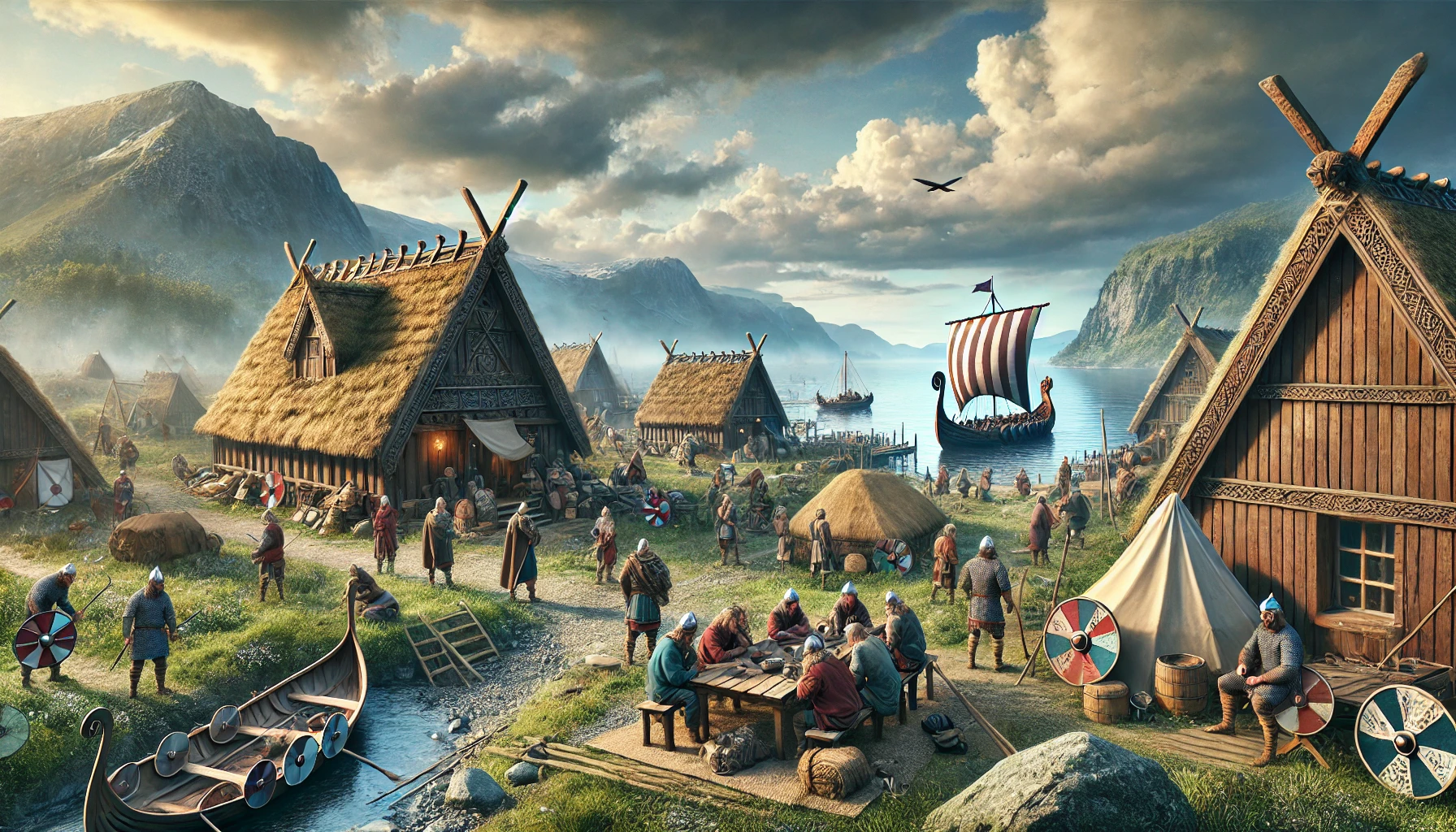
The Vikings, known for their seafaring prowess and raiding expeditions, were a fascinating people whose influence stretched across Europe during the Viking Age (approximately 793–1066 AD). Their culture was rich and complex, characterized by a unique blend of warrior ethos, intricate mythology, and advanced craftsmanship. This article delves deep into the world of the Vikings, exploring their society, traditions, and enduring legacy.
The Viking Society: Structure and Social Hierarchy
Viking society was highly organized, with a clear social hierarchy that influenced every aspect of daily life. At the top were the nobles, known as jarls, who held vast lands and wealth. These powerful leaders controlled the military forces and had significant influence over political decisions within their communities. Jarls were often in command during Viking raids, leading their warriors into battle and overseeing the spoils of war.
Beneath the jarls were the karls, or free men, who made up the bulk of Viking society. These individuals were farmers, craftsmen, and traders who worked the land or honed their skills to contribute to the community. Despite their lower status compared to the jarls, karls enjoyed certain freedoms, such as the right to own property and participate in local assemblies known as things, where important decisions were made democratically.
At the bottom of the social ladder were the thralls, or slaves, who were primarily captives from raids or individuals who had fallen into debt. Thralls had little to no rights and were considered the property of their owners. However, in some cases, thralls could earn their freedom through hard work or by purchasing it, eventually integrating into the broader society as free men.
The Viking Religion: Gods, Myths, and Rituals
Religion played a central role in Viking culture, deeply influencing their worldview and everyday practices. The Vikings believed in a pantheon of gods and goddesses, each governing different aspects of life and the natural world. The most prominent among them were Odin, the all-father and god of war and wisdom; Thor, the thunder god and protector of humanity; and Freyja, the goddess of love, fertility, and battle.
Viking mythology is filled with tales of heroism, betrayal, and the eternal struggle between order and chaos. These stories were passed down through oral tradition and were integral to Viking identity. The epic narratives of the Eddas, which include both the Poetic Edda and the Prose Edda, provide a glimpse into the rich tapestry of Norse mythology. These texts recount the creation of the world, the adventures of the gods, and the eventual cataclysm known as Ragnarok, where the world as the Vikings knew it would come to an end in a great battle.
Rituals and sacrifices were an essential part of Viking religious practice. These acts were performed to gain the favor of the gods, ensure good harvests, and seek protection during raids. Sacrifices often involved animals, but in some cases, humans were also offered, particularly during times of great crisis or significant events. The Vikings also believed in an afterlife, with the most valorous warriors being welcomed into Valhalla, Odin’s hall, where they would prepare for Ragnarok.
The Art of Viking Craftsmanship: From Weapons to Jewelry
Viking craftsmanship was highly advanced, reflecting their skills in metalworking, woodcarving, and shipbuilding. Their artistry was not just functional but also deeply symbolic, often incorporating intricate designs that held cultural significance. Viking weapons, for instance, were not only tools of war but also symbols of status and identity.
Swords, axes, and spears were commonly used in battle, with swords being the most prestigious weapon. These weapons were often richly decorated, featuring intricate patterns known as knotwork or interlace, which were believed to offer protection or magical properties to the bearer. The craftsmanship of Viking swords was so esteemed that some blades were even given names and passed down through generations as family heirlooms.
In addition to weapons, the Vikings were skilled in creating jewelry, which was worn by both men and women as a sign of wealth and status. Viking jewelry was typically made from precious metals such as silver and gold and featured elaborate designs, including animal motifs, runes, and mythological scenes. These pieces were not only decorative but also served as portable wealth, easily traded or used to secure alliances.
Viking shipbuilding was another area where their craftsmanship shone. The longships, with their sleek, narrow designs, were masterpieces of naval engineering. These vessels were capable of navigating both open seas and shallow rivers, allowing the Vikings to raid, trade, and explore vast regions. The ship’s construction also had symbolic meaning, with the prow often carved into the shape of a dragon or serpent, believed to protect the crew and intimidate enemies.
The Viking Legacy: Exploration, Trade, and Cultural Exchange
The Vikings were not only warriors but also skilled explorers and traders. Their seafaring expeditions took them far beyond the Scandinavian borders, leading to the discovery of new lands and the establishment of trade routes that connected distant parts of the world.
One of the most significant Viking explorations was the discovery of Greenland by Erik the Red around 985 AD, followed by the legendary voyage of Leif Erikson to North America, which the Vikings called Vinland, around 1000 AD. These explorations were remarkable for their time and demonstrated the Vikings’ extraordinary navigational skills and adventurous spirit.
Viking trade networks were vast, stretching from the Middle East to North America. They traded a variety of goods, including furs, amber, and slaves, for silver, spices, and other exotic items. The Vikings’ role in trade facilitated cultural exchanges, introducing new ideas, technologies, and goods to different regions. This exchange significantly influenced the development of European civilization during the Middle Ages.
Despite their fearsome reputation as raiders, the Vikings’ legacy is far more complex. They left an indelible mark on the cultures they encountered, blending their customs and traditions with those of the local populations. The Viking influence is still evident today in the languages, place names, and cultural practices of many regions in Europe, particularly in the British Isles, where their presence was most enduring.








